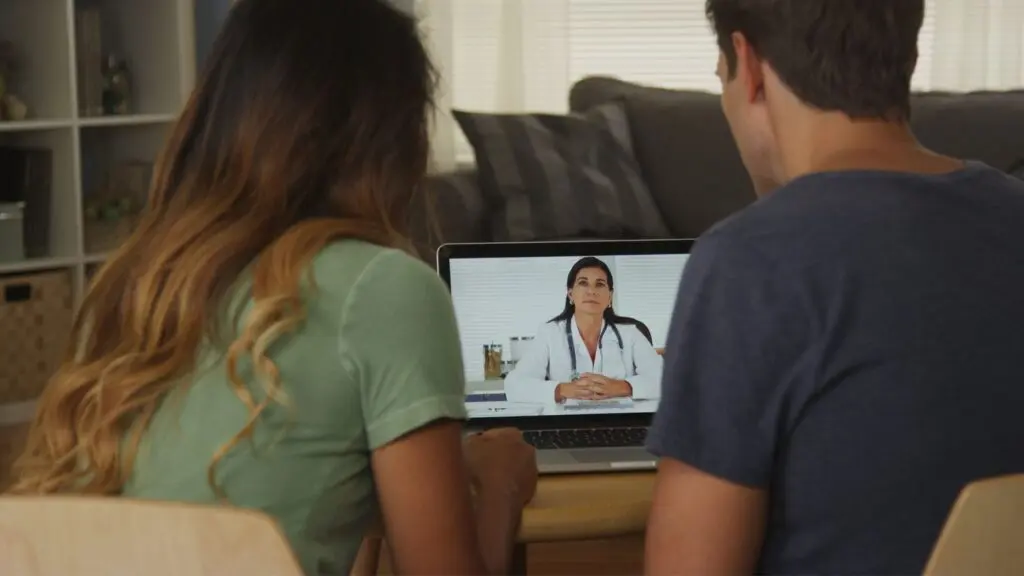This edition of our #lifecare blog series explores how the rising consumer demand for telehealth is better preparing healthcare providers for long-term sustainability.

In “The Emerging Lifecare Model: How consumerism is driving industry collaboration toward health and lifecare as a new strategic platform,” we define lifecare as a new, consumer-centric ecosystem that offers integrated health-related services across the full continuum of consumer needs. Today’s consumers are demanding more information about their health, and they are increasingly willing to rely more on technology and virtual connections as part of a holistic lifecare experience. Enter telehealth.
Commonly thought to mean a specific clinic service or technology, the word telehealth actually refers to a broad strategy—more specifically, the means or methods used to enhance care delivery and education. Telehealth is integral to creating a consumer-centric ecosystem because it facilitates virtual connections across the care continuum (as illustrated below).
The American Hospital Association predicts nearly 27 million virtual doctor consultations will occur by the year 2020—nearly double the number of visits in 2015 (16.6 million). The same report states that nearly 78% of consumers are interested in receiving healthcare virtually some or most of the time. According to Fierce Healthcare, 76% of patients prioritize convenient access to healthcare over in-person interactions with their providers. These findings, coupled with the nationwide primary care provider shortage and large rural population, underscore how telehealth is becoming an increasingly viable—and necessary—solution.
[bctt tweet=”Studies show the vast majority of healthcare consumers want virtual access/telehealth options.” username=”DobiesGroup”]
Telehealth and Rural Healthcare
For all areas of the U.S.—and particularly rural areas—telehealth has the potential to:
- Attract customers through convenience
- Expand reach to underserved populations
- Increase operational efficiency and provider capacity
- Improve the cost and quality of care
- Advance consumer-centric branding and strengthen patient loyalty
Rural healthcare presents challenges that telehealth is uniquely positioned to address. Geographical distance in rural areas limits access to providers—family physicians as well as specialists—resulting in delayed care, more advanced diseases and higher death rates. At Sanford Health (the nation’s largest rural, not-for-profit healthcare system), technology and telehealth are cornerstones of improving health. The system of 45 hospitals and 300+ clinics has adopted an array of technological solutions to provide high-value care to a population of approximately two million individuals. Through telehealth, Sanford Health specialists connect with critical access hospitals to consult on a variety of issues, so patients in need of specialized care can now receive treatment sooner and closer to home.
Another innovative rural health system, Bryan Health (based in Lincoln, Neb.), offers emergency, inpatient and specialty consultations through its telemedicine program. The system, which serves rural communities in four states, provides numerous telehealth services to address challenges specific to rural healthcare and hospitals. The program provides participating hospitals access to licensed pharmacists and dieticians, infectious disease physicians, and medical staff peer-review/consultative services—all of which ensure quality and compliance with state and federal regulations.
Telehealth and Value-based Care: Real-World Impact
Telehealth has the potential to impact the overall cost and quality of care on a large scale. As part of the ongoing transition to value-based care, many health systems and hospitals are exploring options and enhancing their care models with telehealth as a value strategy. For example:
- Columbia Memorial Hospital is working to reduce readmissions by sending telehealth kits home with high-risk patients upon discharge. Kits include Bluetooth-enabled scales, blood pressure cuffs, pulse oximeters, and a smartphone with an app for patients to check vital signs daily and communicate with case managers as needed. The hospital reports roughly 20% improvement in readmissions among patients most likely to be back within 30 days. According to mHealth Intelligence, results like that can help a typical hospital avoid $500,000-$1,000,000 in CMS reimbursement penalties.
- Cleveland Clinic partnered with American Well for telehealth technology solutions to address urgent care in a virtual environment—a strategy so successful it has since been expanded to cover a range of services across 40 departments. The hospital is also developing an app to help chronic back pain patients self-manage their conditions outside the hospital or clinic setting. In yet another chronic care and remote patient monitoring initiative, the hospital is creating new ways to integrate data from consumer devices with Apple’s HealthKit to monitor blood pressure and facilitate video visits for care coaching.
The True ROI of Telehealth
Despite the enormous potential of telehealth to positively affect patient compliance and outcomes, it can be tempting for health systems to “wait-and-see” while the industry churns through various reimbursement models. The current business case for heavy investment in services that keep patients out of hospitals—and reduces overall revenue—can be difficult to make. In many cases, reimbursement incentives are not sufficient to encourage many to embrace high-value strategies and services such as telehealth.
Advisory Board recommends measuring telehealth ROI by focusing beyond reimbursement. Metrics that complement direct revenue address telehealth’s effect on overall program performance, so understanding and taking the right measurements can better position health systems for future success:
- Consider brand impact and patient loyalty. Virtual visits go beyond attracting new patients; they spur demand for subsequent services. Brand loyalty and its corresponding revenue have measurable value. Likewise, offering the flexibility of remote visits and virtual monitoring may help retain existing patients.
[bctt tweet=”The unsung ROI of telehealth: Stronger brand impact and greater patient loyalty.” username=”DobiesGroup”] - Enhance efficiencies through a streamlined workflow. By optimizing telehealth capabilities, providers can more quickly respond to requests for consultations (compared to less dynamic platforms, such as in-person visits).
- Optimize patient management to achieve cost savings. By emphasizing metrics such as reduction in readmissions, calculations such as short-term penalty avoidance (see Columbia Memorial Hospital example above) can be a boon to a business case.
With new consumer and market demands come new innovation—and disruption. As consumers gravitate toward providers who are innovative in delivering convenience and access, successful healthcare leaders will effectively leverage telehealth as part of an overall strategy to keep their organizations relevant and competitive while building sustainable, long-term value.
About the Authors

Share your thoughts about this article by tweeting @DobiesGroup or commenting on our Facebook page.



